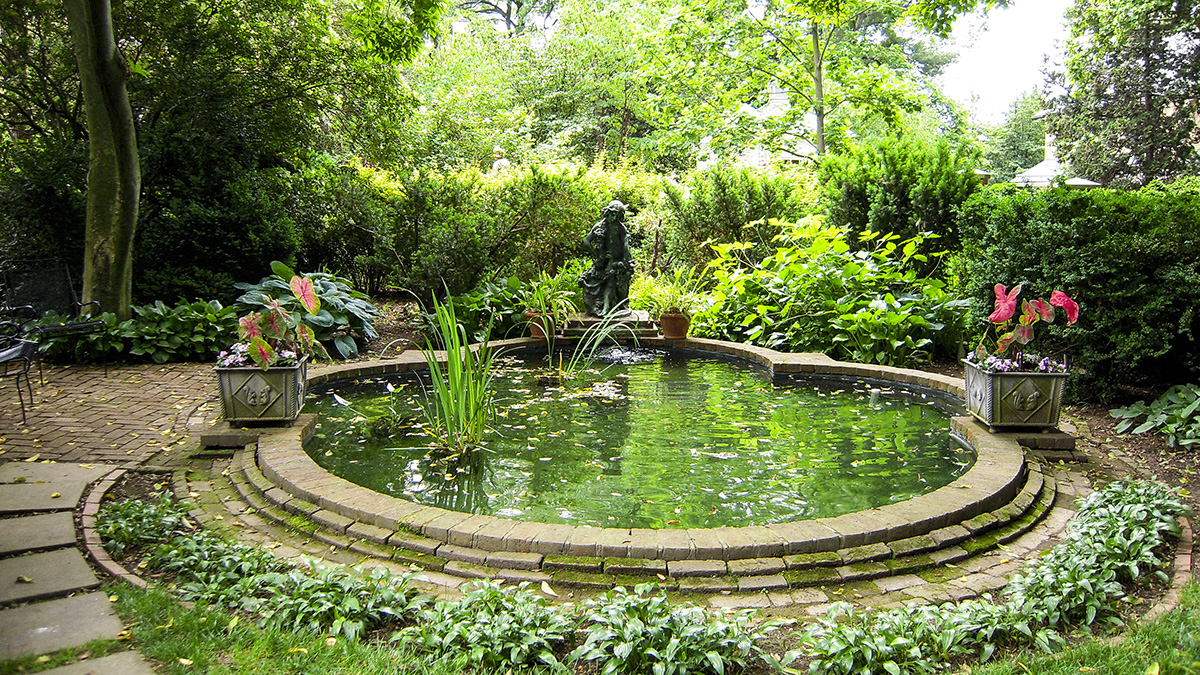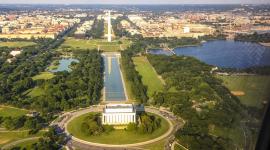Landscape Information
In 1805, Martha Washington’s granddaughter, Martha Custis Peter, and her husband, Thomas Peter, a successful tobacco merchant, established this estate on the hills above the port of Georgetown, engaging William Thornton, the first architect of the U.S. Capitol, to design a Neoclassical Mansion (1815). The property’s remaining 5.5 acres of gardens combine formal, naturalistic and Gardenesque design elements, and are the cumulative work of the Peter family, who occupied the estate for six generations. Along with John Luckett, the estate’s gardener from 1862 to 1906, the Peters preserved and altered the grounds as Georgetown and the Federal City grew around them.
Today shade trees, including a mature tulip poplar specimen, frame the South Lawn, which slopes upward to meet the residence’s circular portico. The northern grounds encompass several distinct garden spaces. The informality of the pastoral Bowling Green contrasts with the geometric clarity of the Boxwood Ellipse, the brick-edged Lily Pond, and the English Knot Garden, the last ornamented with heirloom roses. In the northeast corner of the property, the Tennis Court Garden lies secluded behind a screen of white pine trees and shrubs and is framed by 200-year-old white oaks. The site also contains a number of historic outbuildings, including a Smoke House, Garage, and a Japanese Tea House.
Tudor Place was designated a National Historic Landmark in 1960 and listed in the National Register of Historic Places in 1966.





















